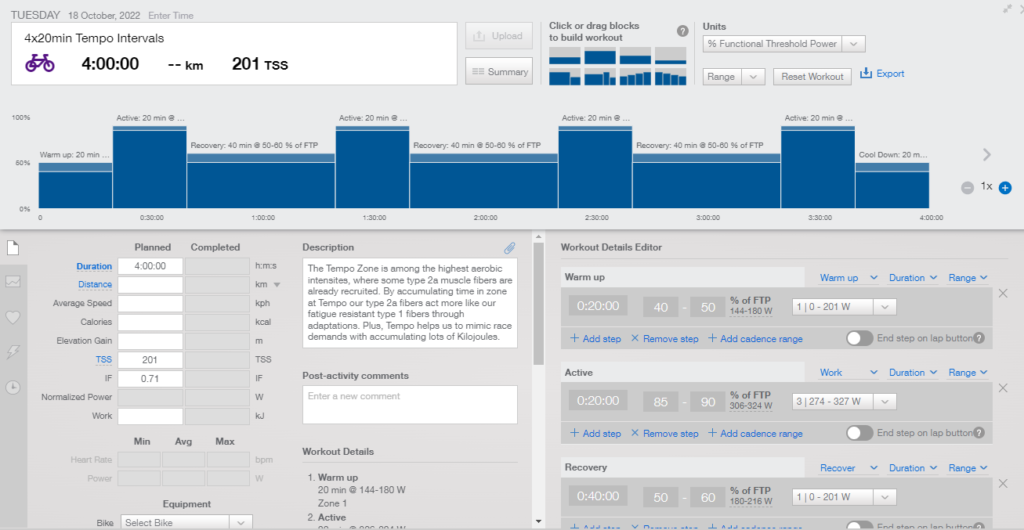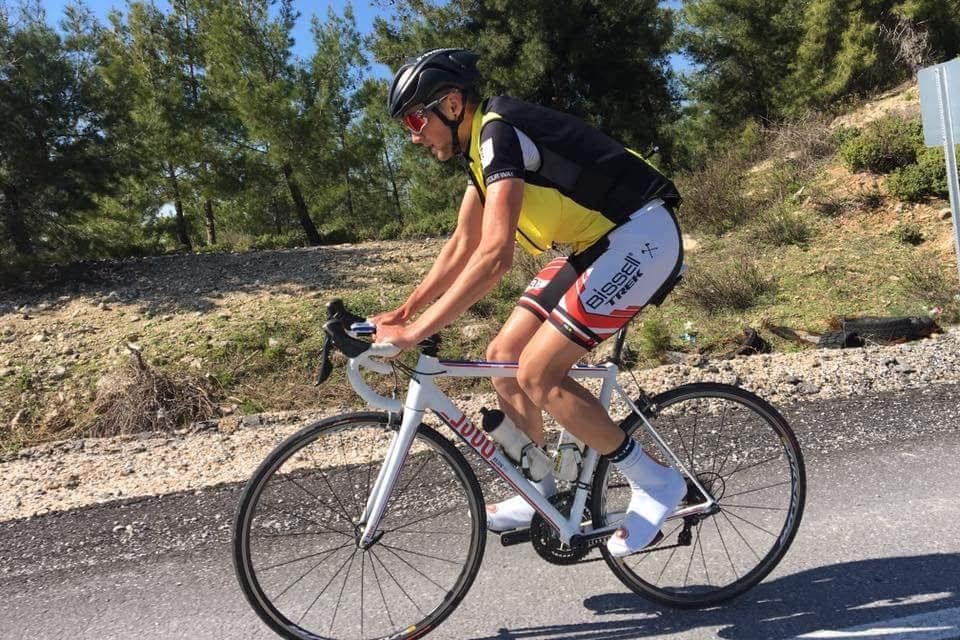Did you ever ask yourself what separates the very best bike racers in the world from the best bike racers in the world? Me too. The answer might be the secret to why some people dominate the ultra-endurance gravel scene or how promising Juniors and U23 cyclists can give a pro career a serious go. What I’m talking about is fatigue resistance. Because with better stamina comes improved endurance.
We might not be the only ones impressed by the pro’s stamina but science is also. And researchers just delivered some great pro-riders data.
Now, what I like about looking at pro data is the fact of what the beginner up to the elite cyclist can learn from it and implement into their training program. And the longer the race the more important this becomes.
Here’s what you need to know about fatigue resistance in cycling.
The Difference Between a Pro and an Amateur
In recent years things like VO2max received a lot of hype. VO2max is seen as the most important determinant in endurance performance. And of course, if you don’t ride your bike that often you likely got quite a potential to improve it.
But for pro cyclists and ambitious elite cyclists, this might not be an important indicator of performance because these guys all got their VO2max high. To be honest, I saw data of elite cyclists that have a relative VO2max over 80 ml/min/kg. Though it’s higher than many pros, they can’t keep up with them in races.
How could that be? Well, we might find the answer in a rider’s resistance to fatigue compared to others.
Fatigue Resistance in Cycling
In the study from Van Erp, adviser at Jumbo-Visma, about maintaining power output after accumulating work done, they compared 2 groups of pro cyclists. Group 1 was the Sprint- and GC leaders, and Group 2 was neo-pros and domestiques.
What they did was they compared the 10s, 1 min, 5 min, and 20 min power after accumulating a given amount of work in kilojoules (kJ). MMP was measured after 0 kJ/kg, 10 kJ/kg, 20 kJ/kg, 30 kJ/kg, 40 kJ/kg, and 50 kJ/kg with 0 kJ/kg being the fresh state.
The cool thing is with a power meter we can measure work done quite easily. Because work in kJ = power x time (in s). So, if a 65kg climber rides 60 minutes at 180 watts they would produce the following work: 180w x 60min (3600s) = 648.000 joule/1000 = 648 kJ/65 kg ~ 10kj/kg
Now, in pro races like the Tour de France riders are faced with all-out efforts like a sprint or an epic uphill battle, after accumulating 40 to 50 kJ/kg or even more.
For our example rider, this means producing high numbers after 2592kj up to 3240kj and more. And this is where the gaps open up. For the sprinters at the 10-second effort and the climbers from the 1-minute effort up to the 5 and 20-minute effort. Of course, longer efforts are the more important ones for climbers.
I mean after 50kj/kg of racing a world-class sprinter produces more than 20 watts per kg (w/kg) for a 10-second sprint compared to the group 2 sprinter! That equals an average power, for two sprinters of 75kg, for group 1 of 1260w, and 1100w for group 2. A massive difference.
And for the climbers from 40kj/kg onwards, we have a difference of .6 w/kg for the 20min all-out effort. For the best of the best, this means producing more than 6 w/kg after 50kj/kg! Let’s compare two climbers of the same weight of 65kg to put things in perspective: The world-class pro would ride over 390w for 20min after 3.240kj, compared to 353w for a group 2 climber. A 37-watt difference is insane!
Additionally, in the study, they mention that pros need to be able to put out high power even after 70kJ/kg during high mountain stages. And looking at Valverde’s Giro d’Italia queen stage file I can confirm that if you want to keep up with the best you have to be able to ride strong after an insane 4536kJ!
So, even between the best cyclists in the world, we see big differences in response to tiredness.
That fatigue resistance is a crucial factor for success as an endurance athlete seems obvious now. But what are some methods, if any, that we can use to improve our fatigue resistance as cyclists? Let’s talk about that now.
How to Improve Fatigue Resistance?
The scientific data on to what extent fatigue resistance for cyclists is trainable is scarce. Consequently, this is aligned with the researcher’s conclusion as they state that more research is needed on fatigue resistance and its trainability.
However, when we apply a basic sports science principle and look at a researched training method, there are indeed ways that we can apply to ride our bikes faster for longer. Let’s discuss these two.
1. Training Sessions to Improve Stamina
When we want to improve our fatigue resistance, we can make use of specificity.
Specificity means training toward the demands of your event. For instance, if you want to take part in the Belgian Waffle Ride in Lawrence, Kansas on the 16th of October, you need to overcome 121 miles (~194,5km) and over 7000 ft (2134m) of climbing.
If you want to be able to ride strong after several exhausting hours a specific workout might be some tempo or threshold intervals after being pre-fatigued.
For example, split a 4-hour ride into the following structure: warm up and do 2x10min intervals at threshold in the first hour. Ride in your endurance zone for 2 hours. In the final hour do another 2x10min at threshold.
Another example might be likewise a 4-hour ride with a 20-minute Tempo Interval at 85-90% of your FTP every hour. By the fourth hour, you might feel it in your legs. This will fatigue your fast-twitch type 2a fibers and by adaptation increase their mitochondrial density and capillarization. Hence, they act more like highly enduring and fatigue-resistant type 1 fibers.
Also, with tempo intervals, you can more easily accumulate lots of kilojoules to mimic the demands of your goal race compared to threshold or HIT.
That’s a typical scenario in racing. You’re out there in your group and it’s one final climb and you’re already a bit smoked but you never tested to ride at your FTP power when fatigued. Better prepare for what’s to come.
To help you build the workouts you need for your event here’s to two workout examples you can use:
FTP Intervals Split with Late-Stage Efforts

Spread Out Tempo Intervals

2. Strength Training to Improve Stamina
Another approach to likely increase your resistance to fatigue and have better stamina might be strength training.
Researchers looking at the effects of serious gym work for cyclists found that the improved endurance may relate to delayed activation of less efficient type 2 muscle fibers, improved neuromuscular efficiency, conversion of fast twitch type 2x fibers into more fatigue-resistant type 2a fibers, or improved musculotendinous stiffness.
The key here is to implement phases of heavy strength training which are best done to start during the off-season in winter.
Let’s finish this article with some factors that might help us delay fatigue.
Other Factors Contributing to Fatigue Resistance
Of course, your muscles determine your fatigue resistance but there are some other factors on how we can delay fatigue in general and so on be cooked later.
The first thing to keep in mind is hydration status. Losing as much as 2% of body weight in terms of hydration can already get you cooked ASAP. So, make sure to start your rides and races well-hydrated. A good guideline is urine color. Make sure it’s a light color.
Another big factor that every cyclist needs to incorporate to extend their endurance is carbohydrates. A meta-analysis looking at over 88 studies indicated that carbohydrates improve endurance performance. Another study by Jeukendrup and colleagues demonstrated that ingesting multiple transportable carbs over glucose only resulted in an 8% better time-trial performance.
In general, you’re looking for at least 30 grams of carbs per hour during easy endurance rides, 60 grams of carbs per hour during medium-intense intervals, and 90 grams of carbs during high-intensity sessions and racing.
To achieve that look out for gels, powders, and bars with a glucose-to-fructose ratio of 2:1. This is the fuel your muscles need to prevent fatigue. For more details check out my article about carbs usage during cycling.
Takeaways
Let’s sum up how we can implement these findings into our lives as cyclists.
Of course, we need more research on this topic but as an endurance athlete myself, I think fatigue resistance is the most important factor alongside FTP that separates winning from losing.
So firstly, apply the principle of specificity and train what’s important in your event. Include workouts with intervals at tempo or threshold, when already pre-fatigued from accumulated intervals and riding. Secondly, lift heavy weights to become a more resilient cyclist. The off-season in winter is the best time to start.
Lastly, work on factors that can delay fatigue like hydration status and carbohydrate fuelling during training and racing. You can improve your carb tolerance by consuming carbs pre-, during, and after your workouts.
With that in mind, I wish you all the best in improving your endurance and becoming a more fatigue-resistant cyclist.
Ready to Improve Your Durability?
If you enjoyed this and want to improve your cycling performance, then get your hands on one of my plans that are available on TrainingPeaks and ride faster for longer, or click below to get my specific base, build, and peak plans for amateur and elite cyclists:
- RV The Block Periodization Plan, 4 Weeks (6-8 Hours)
- RV Improve Your FTP, 8 Weeks on 6 Hours, 10 Hours, or 15 Hours
- RV Gravel Advanced Base Plan 8-12 Hours (12 Weeks) – All Gravel Races
- RV Unbound 200 Three Phases Build Plan, Advanced 8-12 Hours (12 Weeks)
- RV Unbound 200 Three Phases Peak Plan Advanced 10 Hours (8 Weeks)
Follow me on Instagram for more Cycling Content.
- Get my favorite Power Meter *here.
- Get my favorite Shoes *here.
- Get the Vittoria Corsa Tyres I use *here.
References
- Maintaining Power Output with Accumulating Levels of Work Done Is a Key Determinant for Success in Professional Cycling
- Case Report: Load, Intensity, and Performance Characteristics in Multiple Grand Tours
- Training Fast Twitch Muscle Fibers: Why and How
Ad Hint for Asterisk Links
*Asterisks are affiliate links from services and gear I use and love. If you take action (i.e. make a purchase) I’ll earn some coffee money which I promise to drink while you enjoy the content and offers. You don’t pay a higher price.
